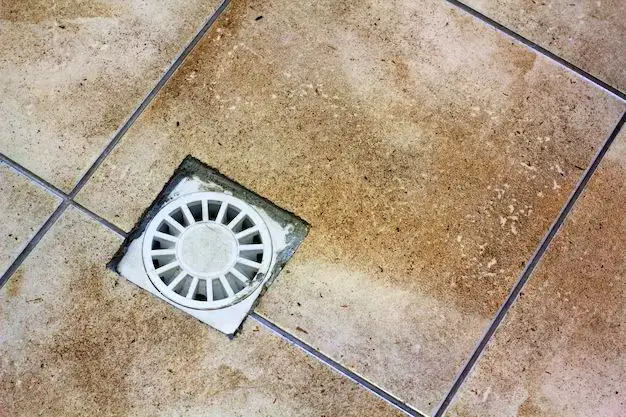Having an open floor drain in your basement can be an eyesore, a nuisance, or even a safety hazard. Many homeowners with a drain in the floor want to know if they can cover it up. There are a few important factors to consider when deciding whether or not to cover a basement floor drain.
Page Contents
- 1 What is the purpose of a basement floor drain?
- 2 Can I legally cover my basement floor drain?
- 3 What are the risks of covering a basement floor drain?
- 4 What are some ways to cover a basement floor drain legally?
- 5 What are some good alternatives to covering a drain?
- 6 How can I maintain my basement floor drain?
- 7 Conclusion
What is the purpose of a basement floor drain?
Basement floor drains serve a few key purposes:
- Allow water to drain away in case of flooding or water leakage
- Provide access for drain cleaning and maintenance
- Serve as an emergency overflow if the main sewer line backs up
Having a way for water to easily drain out of a basement helps prevent extensive damage from leaks or flooding. If water has nowhere to go, it can cause mold, mildew, warped floors and walls, electrical issues, and other major problems.
Can I legally cover my basement floor drain?
Most current plumbing codes require that basement floor drains remain accessible and cannot be permanently covered or blocked. Even if your home is old enough to have been originally built without a floor drain, most municipalities require bringing the plumbing up to current code when doing renovations.
Covering a floor drain violates plumbing codes because it eliminates the drain’s usefulness and can cause all sorts of hazards if water backs up or leaks into the basement. In most cases, you can face fines for knowingly covering a floor drain illegally.
What are the risks of covering a basement floor drain?
There are a few significant risks to covering a basement floor drain, including:
- Sewage backup: If the main sewer line backs up, an open floor drain allows the overflow to drain into the basement instead of backing up through fixtures and appliances on the upper floors.
- Flooding damage: With no open drain, any leaks or groundwater seepage can flood the basement, causing extensive water damage.
- Mold & mildew growth: Wet conditions encourage mold growth, which can seriously impact air quality and health.
- Structural damage: Floodwaters can warp wood and cause cracks in concrete and drywall.
- Electrical issues: Water contacting electrical wiring or equipment can cause shock/fire hazards.
Illegally covering a drain puts the home at risk for very expensive repairs down the road.
What are some ways to cover a basement floor drain legally?
In some cases, it is possible to legally cover a basement floor drain in a way that still allows access for maintenance and emergencies. Some legal options include:
- Installing a removable grate or trap door
- Building a ledger board frame with a removable panel
- Covering the drain with a plastic lid or rug
- Lowering the drain and installing a removable tile
The key requirements are that the cover allows water to freely flow into the drain, does not fully block access, and can be removed quickly if needed. Local codes may have additional rules, so always check with the building department first.
What are some good alternatives to covering a drain?
Instead of attempting to cover the drain, consider these alternative approaches:
- Disguise it: Use a decorative grate or tile to help the drain visually blend in.
- Lower it: Have the drain lowered so the grate is flush with the floor.
- Reroute it: In some cases, the drain can be moved to a less conspicuous area.
- Add a sump basin: Install a basin and sump pump to collect and automatically pump away water.
Adding a sump pump system reduces the need to rely on the floor drain for water removal. A professional can advise you on the best alternative solutions for your specific basement situation.
How can I maintain my basement floor drain?
Regular maintenance is important for proper basement floor drain function. Recommended maintenance tips include:
- Clean debris from the drain to prevent clogging
- Flush with water to remove buildup of silt or minerals
- Use a drain auger or plumber’s snake to clear blockages
- Pour water down unused drains to keep P-traps full
- Monitor for leaks, cracks or other deterioration
Checking the floor drain weekly and cleaning it every few months helps prevent problems. Catching issues early is the best way to avoid costly backups or flooding.
Conclusion
Covering over a basement floor drain completely is illegal in most cases due to safety concerns. Homeowners who wish to cover their drain have a few options to do so legally, such as using a removable cover. To avoid the need to cover the drain, installing a sump pump system or rerouting the drain are often good solutions. With regular maintenance to keep the drain clear, a basement floor drain doesn’t have to be an eyesore.
